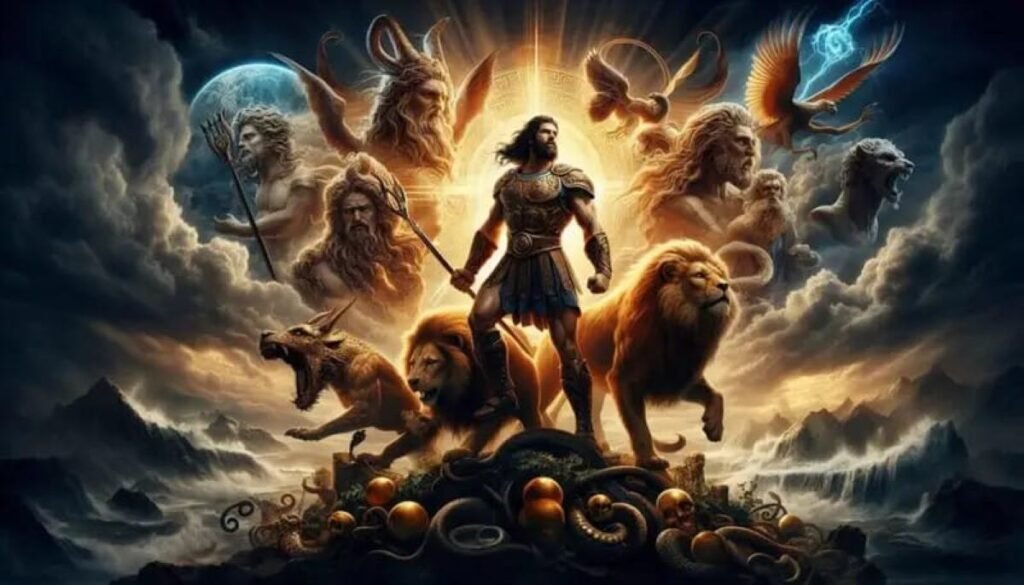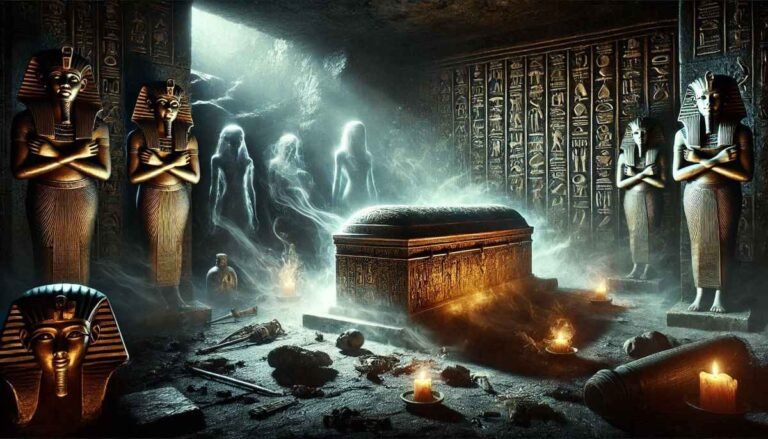
Hercules, one of the most renowned heroes in Greek mythology, is best known for his immense strength and bravery. However, his journey was not merely one of physical feats—it was also a test of his resilience, wisdom, and character. The 12 Labors of Hercules, given to him as punishment for a grievous act, remain iconic not only for their difficulty but also for their symbolic significance in personal growth and transformation.
In this blog, we will delve into these legendary trials and explore how they align with the astrological interpretations, lessons of life, and their connection to the Hero’s Journey. We will also touch upon Hercules’ death and its deep spiritual meaning.
Table Of Contents
- The Myth of Hercules: The Hero’s Journey
- The 12 Labors of Hercules: The Legendary Trials
- Hercules’ Death: A Hero’s Final Test
- Conclusion: Lessons from the Labors of Hercules
The Myth of Hercules: The Hero’s Journey
Before diving into the trials themselves, it’s essential to understand that Hercules’ journey is a perfect example of the Hero’s Journey, a framework outlined by Joseph Campbell. According to Campbell, the Hero’s Journey is an archetypal narrative pattern that outlines a hero’s transformation from an ordinary person into someone with wisdom and power, often after facing immense trials. Hercules’ trials serve as the trials of transformation, where each labor represents an internal challenge he must overcome, just as we face challenges in our own personal growth.
The 12 Labors of Hercules: The Legendary Trials
The 12 Labors of Hercules were assigned to him as a punishment for killing his wife and children in a fit of madness caused by the goddess Hera. His mentor, the god Zeus, decided these trials would cleanse his sins. Let’s look at each labor and its deeper meanings:
1. Slay the Nemean Lion
Hercules’ first labor was to defeat the invulnerable Nemean Lion, whose skin was impenetrable. Hercules, using his strength and cunning, strangled the beast and used its own claws to skin it.
- Spiritual Meaning: This labor symbolizes the strength required to overcome insecurities and fears that seem insurmountable. It teaches us that the very things we fear most often hold the key to our growth.
2. Slay the Nine-Headed Lernaean Hydra
The second labor involved the deadly Hydra, a serpent-like creature with multiple heads. Each time Hercules severed one head, two grew back. With the help of his nephew Iolaus, he cauterized the necks to prevent them from regenerating.
- Spiritual Meaning: The Hydra represents the idea of overcoming persistent problems in life. It shows that some obstacles require not just strength but strategy and persistence.
3. Capture the Golden Hind of Artemis
The third labor required Hercules to capture the sacred deer of Artemis, a symbol of speed and grace. It was a difficult task, as the deer was incredibly fast and sacred, meaning killing it would anger the goddess Artemis.
- Spiritual Meaning: This labor teaches us the importance of balance in life. It reminds us that pursuing our goals should not come at the cost of violating ethical boundaries.
4. Capture the Erymanthian Boar
The boar was terrorizing the land, and Hercules was tasked with capturing it alive. He chased the beast through thick snow until it was trapped.
- Spiritual Meaning: This labor highlights control over aggression and the need for calm and strategic action when dealing with overwhelming emotions.
5. Clean the Augean Stables
The Augean stables had not been cleaned in years, and the task seemed impossible. Hercules solved this by diverting the rivers Alpheus and Peneus to wash away the filth.
- Spiritual Meaning: The stables represent old habits and toxic environments. This labor shows that sometimes the best way to address a problem is to think outside the box and use unconventional methods.
6. Slay the Stymphalian Birds
The Stymphalian birds were vicious creatures with sharp metallic feathers. Hercules used a rattle given to him by Athena to scare the birds into the air, where he shot them down with his bow.
- Spiritual Meaning: This labor represents overcoming negative thoughts and harmful patterns in life. It teaches that sometimes we need an external force or a change in perspective to overcome deep-rooted issues.
7. Capture the Cretan Bull
Hercules’ task was to capture the powerful bull from Crete, which was known for its strength and aggression. Hercules subdued the bull and brought it back alive.
- Spiritual Meaning: The bull represents raw power and emotion. This labor teaches us to harness our strength and passions rather than letting them control us.
8. Steal the Mares of Diomedes
The Mares of Diomedes were wild horses that fed on human flesh. Hercules was to capture them, a task that required him to subdue both the horses and their king, Diomedes.
- Spiritual Meaning: This labor emphasizes overcoming destructive desires. It teaches us that some of life’s most rewarding achievements come only after we control our impulses and emotions.
9. Obtain the Belt of Hippolyta
Hercules was tasked with obtaining the magical girdle of Hippolyta, the queen of the Amazons. After a series of misunderstandings, he succeeded, though the task was fraught with conflict.
- Spiritual Meaning: The belt symbolizes female strength and empowerment. This labor highlights the importance of understanding and respect in achieving your goals.
10. Capture the Cattle of Geryon
This task involved capturing the cattle of the three-bodied Geryon, who lived on a distant island. Hercules had to overcome both the creature and a series of dangerous challenges.
- Spiritual Meaning: The cattle represent the wealth of knowledge and the importance of facing challenges head-on to claim what’s rightfully yours. This labor teaches perseverance.
11. Steal the Apples of the Hesperides
The apples of the Hesperides were guarded by a dragon. Hercules was tasked with stealing them, which required him to seek guidance from various gods and even trick Atlas into helping him.
- Spiritual Meaning: The apples represent wisdom and eternal knowledge. This labor teaches that seeking knowledge often requires asking for help from others and working with others, not just relying on brute force.
12. Capture Cerberus
The final labor was to capture Cerberus, the three-headed dog guarding the underworld. Hercules had to descend into the underworld and bring Cerberus back alive without using any weapons.
- Spiritual Meaning: Cerberus represents death and the unconscious mind. This labor teaches us to confront our deepest fears and uncertainties with courage and resolve.
Hercules’ Death: A Hero’s Final Test
Despite his many victories, Hercules’ death was marked by a tragic end. His death came after he wore a tunic dipped in the poisonous blood of the centaur Nessus, which caused him unbearable pain. Ultimately, Hercules died and was granted immortality by the gods.
- Spiritual Meaning: Hercules’ death serves as a reminder that even the mightiest hero cannot escape the forces of fate. It symbolizes the inevitable cycle of life and death and encourages us to face our mortality with grace.
If you’re interested in exploring other heroic journeys and how they relate to personal growth, be sure to read The Myth of Icarus: What Can Ambition and Hubris Teach You About Life’s Limits?
Conclusion: Lessons from the Labors of Hercules
The 12 Labors of Hercules offer more than just a glimpse into ancient Greek mythology—they are profound lessons for personal growth. They remind us that challenges in life, whether physical, emotional, or spiritual, are often essential to our transformation. Hercules’ journey symbolizes the importance of resilience, the power of inner strength, and the need for strategic thinking in overcoming obstacles.
Through these trials, Hercules showed us that facing hardships head-on, learning from each step, and emerging victorious can shape us into wiser, more capable individuals.







